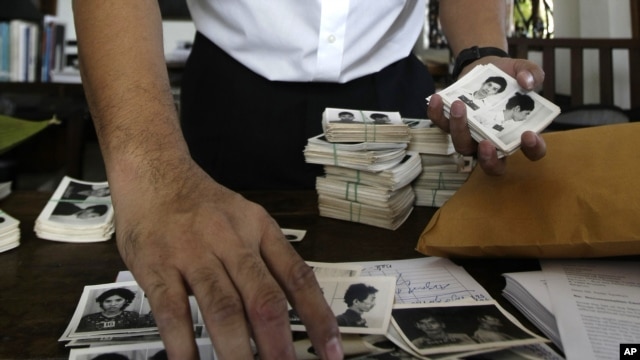Jaipur, Aug 22 (IANS) Rains continued to create havoc as the death toll rose to eight in this Rajasthan capital in incidents of wall collapses and electrocution, an official said Wednesday.
Two more deaths were reported from rural areas in Jaipur district, he added.
Prime Minister Manmohan Singh telephoned Chief Minister Ashok Gehlot and took stock of the situation. An officials said that Manmohan Singh had assured all possible help in tackling the situation.
Over 100 colonies in low-lying areas and the Walled City are inundated since Tuesday night, theofficial said.
“In view of the situation, the chief minister took a meeting of senior administration officers and instructed them to launch the relief work on a war footing. He has asked the district collectors to arrange and use all disaster management equipment to bring relief to the people across the state who were affected due to rains,” a senior administration official told IANS.
He added that the district collectors have been asked to arrange for sacks of sands and use them in low-lying areas, so that water does not gather in residential colonies. Control rooms have also been set up at district headquarters where affected people can call and seek help.
“Jaipur and some other districts in northern and eastern parts of the state have been asked to remain extra alert as warning of another spell of heavy rains have been made by the meteorology department,” said the officer.
Normal life and vehicular traffic came to a standstill in several districts, including Sikar, Dausa, Jhunjhunu and Dholpur due to the heavy rains.
The Jaipur district administration had announced a holiday for all government and private schools Wednesday.
Heavy rains, that began lashing the city from 11 p.m. Tuesday, were estimated at 148.4 mm Wednesday morning.
With the rains continuing for nearly four hours, people spent a sleepless night as water gushed into their houses, damaging belongings.
In several slum areas, people were forced to take shelter on rooftops.
Mayor Jyoti Khandelwal told reporters that markets in the walled city and the slum areas in Jawahar Nagar, Shashtri Nagar and Sodala were the worst-affected.
“All senior officials and disaster management staff of Jaipur Municipal Corporation are in the field assessing the situation and pumping water out of the inundated colonies,” said Khandelwal.
But residents complained of poor management by JMC.
“Rains have been continuing for one week. However, municipal officials did not take precautionary measures,” Shilpa Kumawat, living in the low-lying Johari Bazaar said.
She and her family have been trying to pump accumulated water out of their house since morning.
Electricity supply too had snapped in almost half of the city in the morning due to the rain.
Thursday 23 August 2012
http://www.thaindian.com/newsportal/enviornment/10-die-in-jaipur-of-rain-triggered-disasters-lead_100640051.html
Two more deaths were reported from rural areas in Jaipur district, he added.
Prime Minister Manmohan Singh telephoned Chief Minister Ashok Gehlot and took stock of the situation. An officials said that Manmohan Singh had assured all possible help in tackling the situation.
Over 100 colonies in low-lying areas and the Walled City are inundated since Tuesday night, theofficial said.
“In view of the situation, the chief minister took a meeting of senior administration officers and instructed them to launch the relief work on a war footing. He has asked the district collectors to arrange and use all disaster management equipment to bring relief to the people across the state who were affected due to rains,” a senior administration official told IANS.
He added that the district collectors have been asked to arrange for sacks of sands and use them in low-lying areas, so that water does not gather in residential colonies. Control rooms have also been set up at district headquarters where affected people can call and seek help.
“Jaipur and some other districts in northern and eastern parts of the state have been asked to remain extra alert as warning of another spell of heavy rains have been made by the meteorology department,” said the officer.
Normal life and vehicular traffic came to a standstill in several districts, including Sikar, Dausa, Jhunjhunu and Dholpur due to the heavy rains.
The Jaipur district administration had announced a holiday for all government and private schools Wednesday.
Heavy rains, that began lashing the city from 11 p.m. Tuesday, were estimated at 148.4 mm Wednesday morning.
With the rains continuing for nearly four hours, people spent a sleepless night as water gushed into their houses, damaging belongings.
In several slum areas, people were forced to take shelter on rooftops.
Mayor Jyoti Khandelwal told reporters that markets in the walled city and the slum areas in Jawahar Nagar, Shashtri Nagar and Sodala were the worst-affected.
“All senior officials and disaster management staff of Jaipur Municipal Corporation are in the field assessing the situation and pumping water out of the inundated colonies,” said Khandelwal.
But residents complained of poor management by JMC.
“Rains have been continuing for one week. However, municipal officials did not take precautionary measures,” Shilpa Kumawat, living in the low-lying Johari Bazaar said.
She and her family have been trying to pump accumulated water out of their house since morning.
Electricity supply too had snapped in almost half of the city in the morning due to the rain.
Thursday 23 August 2012
http://www.thaindian.com/newsportal/enviornment/10-die-in-jaipur-of-rain-triggered-disasters-lead_100640051.html







